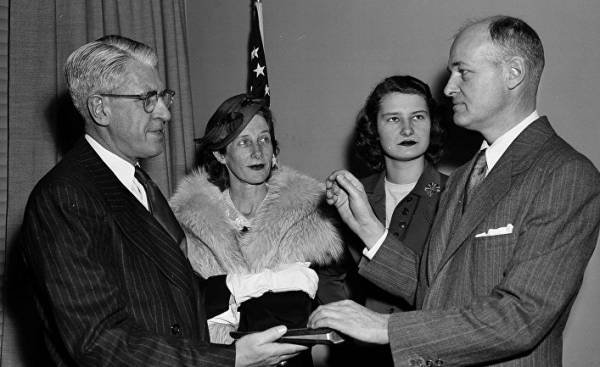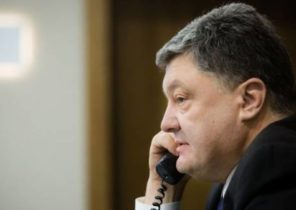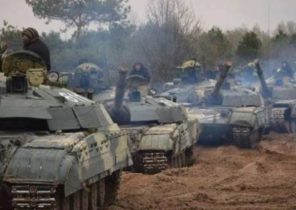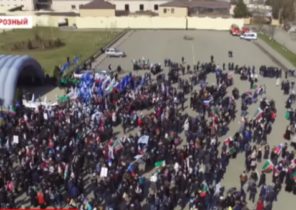
This year, the doctrine of deterrence, which was proposed by the American diplomat George Kennan (George F. Kennan) and which became the basis for the strategic victory of the West over Soviet communism in the cold war, is 70 years old. I guess this is reason enough to refresh your memory of what is, without doubt, has become one of the most successful geopolitical concepts in modern history.
However, there are at least two good reasons to come back to outstanding ideas, which were first published in the journal Foreign Affairs in July of 1947, triggering a hot public debate about U.S. relations with their former military ally, the Soviet Union, and regarding the shape of the postwar world order, which was to survive for many years.
First, most Americans, especially those who are less than 40 years, almost nothing is known about the cold war. Even those of us who are considerably more than 40 and who had a chance to see this massive, all-consuming conflict, he has been moved to the far corners of memory.
However, the most compelling reason to brush up on containment policy, based on a deep understanding of the Russian soul, is that it helps explain the sources and targets of increasingly aggressive foreign policy of Vladimir Putin. If we consider the overall picture, it is the policy of the King Vladimir in relation to the USA and the world in General, bears a sinister resemblance to the policy of Stalin and his successors. Kennan helps us to understand why this is happening and what you can do with it.
In the opinion of a vast number of experts on Russian foreign policy, “Putin doctrine” carries very negative consequences for the United States, the West and even for the Russian people. Its key points are:
1. The return of a significant share of extensive political, economic and military resources lost due to the collapse of the Soviet Union in 1991. The annexation of Crimea in 2014 and provided by Moscow’s support for the militia in the East of Ukraine marked the beginning of the implementation of the ambitious expansionary programme, not its end. As the historian from Princeton’s Stephen Kotkin (Kotkin, Stephan), “like Stalin, Putin is considering all formally independent of the state border… as a weapon in the hands of the Western powers, intending to use it against Russia.”
2. Recovery anti-Western “sphere of influence” in neighboring countries, which should result in the domination of Moscow in such countries as Kazakhstan, Belarus, Ukraine, Georgia and Baltic countries.
3. The restoration of Russia’s status as a key player in the middle East, has the right to assess the initiatives of the US and its allies in the region.
4. Active use of social media and sophisticated technologies and methods of information warfare campaign designed to destabilize relations between the members of the Western Alliance and to influence political processes in their societies so that it is in the interests of Russia. Without a doubt, the most visible, a similar campaign has now become Russia’s attempts to influence the course of U.S. presidential elections, but experts on issues of national security managed to make a long list of such campaigns.
5. The inexorable strengthening of state power in Russia, which is based on overseas Imperial ambitions of Putin. Powerful, extensive propaganda apparatus inspires people, that the sharp rise in military spending and the restriction of democratic freedoms in Russia — it is a necessary measure to counter the threat to Russia posed by the US and the West in General. According to Leon Aron (Leon Aron) from the American enterprise Institute, Moscow persistently focuses on the fact that “the only effective means of protection from foreign threats… is courageous leadership of the regime.” Aron calls this strategy “a strategy besieged fortress”.
If George Kennan were alive today, it’s unlikely one would be surprised if Putin doctrine. In February 1946, the state Department, trying to understand the causes of resistance to the Soviet Union, the creation of such international institutions as the international monetary Fund and the world Bank, and the reasons for the suppression of political activity in Eastern Europe, sent a message to the American Embassy in Moscow with a request to analyze the attitude of the Soviet leadership and the possible implications of this worldview for US policy. Because Kennan was the chief Russia expert at the Embassy, he made answer.
And what a response! First, he sent the famous telegram in the history of American diplomacy, a masterpiece with a length of 5.5 a thousand words. Then, when the Truman administration decided that “long telegram” Kennan shall be the basis of U.S. strategy designed to counter the expansionism of the Soviet Union, Kennan published in Foreign Affairs magazine an article in which he introduced the American public with the principles of the policy of containment. The article “Sources of Soviet conduct” was published in July 1947 under the pseudonym “X,” but her style is concise and very soon exposed the identity of the author, who by that time had become head of policy planning for the US state Department.
Kennan argued that the intransigence of Moscow was not the result of some provocative actions from the West, and the deep-rooted sense of insecurity which never left the Russian leaders in the past several centuries. Since the 16th century the Russians had gradually absorbed the neighboring States to thwart the Western powers to invade their territory.
“The origins of maniacal point of view of the Kremlin on international relations, wrote Kennan in his “Long telegram” — is the traditional and instinctive to Russia a sense of insecurity… they feared foreign invasion, avoided direct contact between Western world and their own, feared what might happen if the Russian people knew the truth about the outside world or the outside world know the truth about life in Russia. And they were looking for ways to ensure their safety only in a bitter and deadly struggle for total destruction of rival powers, never engaging with them in agreements and compromises”.
Like the tsars, Stalin and his Politburo had to treat the outside world as a threat because the alleged malicious intent of foreigners was the only excuse “for the dictatorship without which they did not envision government; violence, without which they could not do; the sacrifices they considered it their duty to bring”.
Kennan argued that Marxism-Leninism was further strengthened by the hostile attitude of Russian leaders to Western institutions, especially individual freedom and free markets because they undermine the state monopoly on financial and human resources.
Given that the policy of the Kremlin “this is a smooth flow,” which is committed “in that whatever was to fill all corners and depressions in the basin of world power,” wrote Kennan in “the Sources of Soviet conduct”, the cornerstone of U.S. policy toward the Soviet Union “should be long-term, patient but firm and vigilant containment of the expansionist tendencies of Russia” and “skillful and vigilant opposition in different geographical and political points, continuously changing depending on the shifts and changes in Soviet policy.”
The most effective from the point of view of Kennan, a form of counter was not military confrontation — he believed that it must be avoided at all costs and that it can be consistently avoided through military and economic power of the United States, and political dynamism that are typical for America and its allies. The most effective form is the political, economic, and moral force: the fundamental goal of American policy should be to strengthen Western values and institutions everywhere, where the main interests of the United States directly or indirectly threatens Soviet power or communism.
If open societies show patience if they are to respond to the expansionist attempts of Moscow’s restraint and discipline that the Soviet system, wrote Kennan, discreditied himself in the eyes of those who live under its domination, and will collapse under its own weight.
The policy of containment was the basis of the Truman doctrine of 1947, which called for providing military and economic aid to any country, faced with the threat of communism, and the Marshall Plan, under which the US provided around $ 12 billion to the governments of Western Europe to rebuild their economies devastated by the war, and against the Communist parties that immediately after the war was especially strong in Italy, France and some other countries.
The principles of deterrence was the basis of US policy toward the Soviet Union and the wars against the Communists for “national liberation” in countries such as Korea and Vietnam, until the mid-1980-ies, when the Soviet Union began to fall apart. In 1991, the Soviet Union finally collapsed mainly under its own weight — as Kennan had predicted.
Do you expect such a fate Tsar Vladimir? Some professional observers have already predicted him to such a fate. One way to accelerate the decline of the Putin regime, quite possibly, is the resurrection of the strategic doctrine, which was first formulated by American diplomat from Milwaukee 70 years ago.
But the question of whether the author of “the Art to make deals” to recognize the wisdom of the containment strategy, until, of course, remains open.







